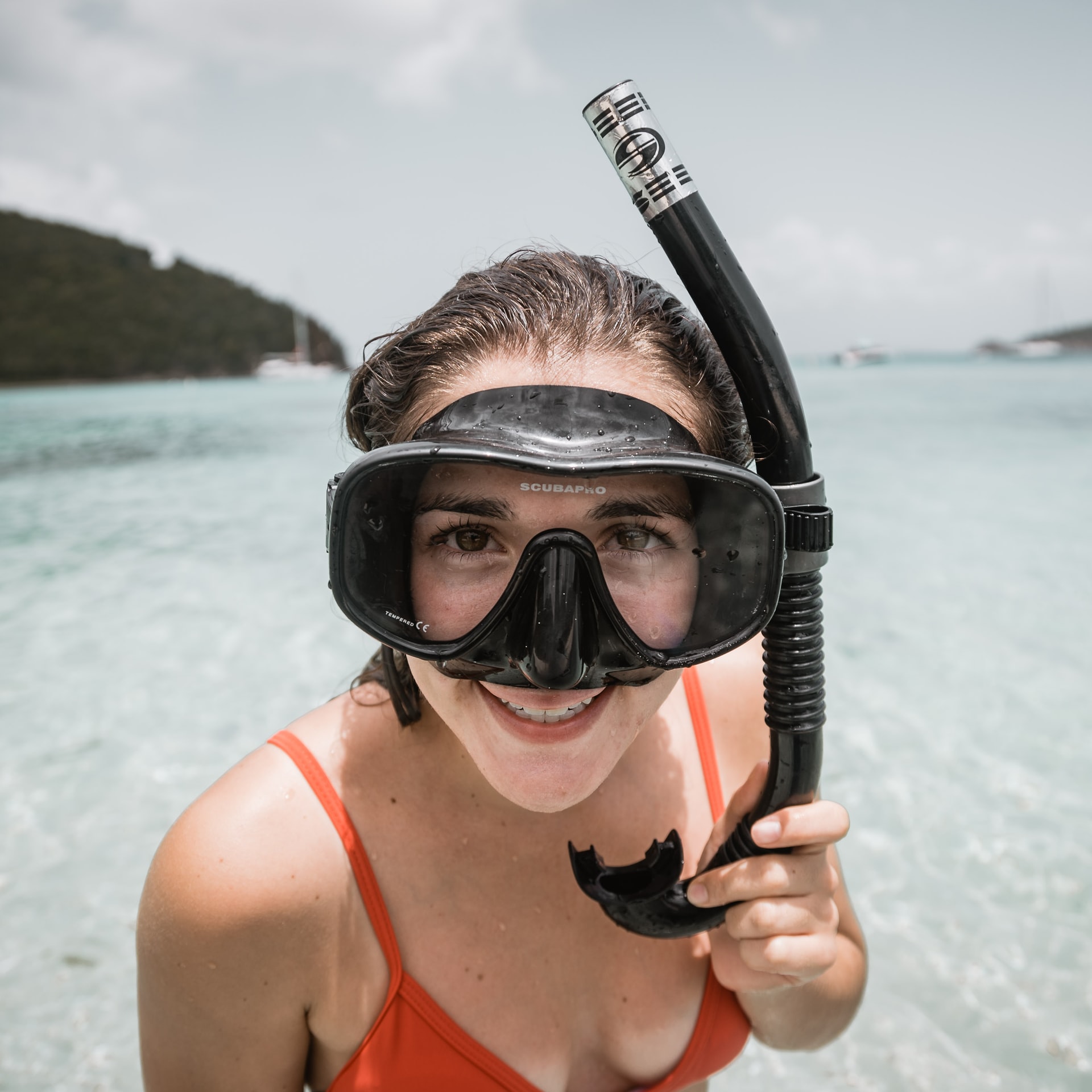Snorkel masks are important equipment for anyone who loves to explore the underwater world. Whether you are a beginner snorkeler or an experienced diver, having a high-quality snorkel mask is essential for a comfortable and safe experience. But like any piece of equipment, snorkel masks don’t last forever.
So, how long do snorkel masks last? The answer depends on several factors, including the quality of the mask, how often it is used, and how well it is cared for.
“Snorkeling masks generally have a lifespan of 3-5 years if utilized frequently. They may be stored in the dark and dry for up to ten years. However, sun, sand, and seawater cause degradation of the silicone surrounding the face skirt when worn often. Less expensive rubber masks have a shorter useful life.“
In this article, we will take a closer look at the lifespan of snorkel masks and provide some tips for extending the life of your mask.
How Long Do Snorkel Masks Last? Detailed Guide

The lifespan of a snorkeling mask can vary widely depending on several factors. Here is a more detailed guide to understanding how long snorkel masks typically last:
- Quality of the mask: The quality of the mask is one of the most important factors in determining its lifespan. Higher-quality masks that are made from durable materials and have sturdy frames, good seals, and straps will last longer than lower-quality masks. Cheap, poorly made masks are more likely to break or become damaged over time.
- Materials used: The materials used in the mask’s construction can also impact its lifespan. Silicone and polycarbonate plastic are two common materials used in snorkeling masks that are known for their durability. Silicone is resistant to tears and abrasions and can withstand extreme temperatures. Polycarbonate plastic is strong and lightweight but can become brittle if exposed to extreme temperatures.
- Frequency of use: How often you use your snorkeling mask can also affect lifespan. If you only go snorkeling once or twice a year, your mask will likely last longer than if you go snorkeling every weekend. The more you use the mask, the more wear and tear it will endure, which can shorten its lifespan.
- Care and maintenance: Proper care and maintenance can also help extend the life of your snorkeling mask. Be sure to rinse the mask thoroughly with fresh water after each use to remove any salt, sand, or debris that may have accumulated. Dry the mask completely before storing it to prevent mold or mildew growth. Avoid storing the mask in a hot, humid place, as this can cause the silicone skirt to become damaged or degraded over time. If the rubber seal around the lens becomes stretched or torn, replace it to prevent leaks and ensure a good seal. Clean the mask periodically with a mild detergent and a soft cloth to remove any dirt or grime that may have accumulated.
You can expect a well-made snorkeling mask made from durable materials to last several years with proper care and maintenance.
Snorkeling Mask Life and Material
The lifespan of a snorkeling mask can vary depending on the quality of the mask and the materials it is made from. Generally, higher-quality masks made from durable materials such as silicone or polycarbonate plastic will last longer than cheaper, lower-quality masks made from less durable materials.
Silicone is a popular material for snorkeling masks because it is flexible, durable, and resistant to tears and abrasions. It is also resistant to extreme temperatures, making it suitable for cold and warm water.
Polycarbonate plastic is another durable material often used in snorkeling masks. It is a strong, lightweight plastic resistant to scratches and impact. However, it can become brittle if exposed to extreme temperatures, so it is important to store the mask in a cool, dry place.
In addition to the materials used in the mask, the quality of the construction and design can also impact its lifespan. Masks with sturdy frames and well-made seals and straps are more likely to last longer than poorly made masks with flimsy frames and subpar seals.
You can expect a well-made snorkeling mask made from durable materials to last several years with proper care and maintenance.
Common Snorkeling Mask Damages and Breaks

Several common issues can cause snorkeling masks to break or become damaged. Some of these include:
- Cracks or fractures in the mask frame or lens: These can be caused by impact, such as if the mask is dropped or hit against a hard surface.
- Deterioration of the silicone skirt: The silicone skirt is the part of the mask that seals against the skin and creates an airtight seal. Over time, the silicone can become dry and brittle, leading to leaks.
- Stretching or tearing of the rubber seal: The rubber seal around the lens can become stretched or torn, causing leaks or making it difficult to get a good seal.
- Scratches or abrasions on the lens: If the mask’s lens becomes scratched or scuffed, it can impact visibility and make it difficult to see underwater.
- Mold or mildew growth: If the mask is not properly cleaned and stored, mold or mildew can grow on the inside of the lens or silicone skirt, which can cause irritation or allergic reactions.
By taking good care of your snorkeling mask and handling it with care, you can help prevent these issues and extend the life of your mask.
Maintaining and Caring For Snorkel Masks
There are several steps you can take to help maintain and care for your snorkel mask:
- Rinse the mask thoroughly after each use: After snorkeling or diving, rinse the mask with fresh water to remove any salt, sand, or debris that may have accumulated.
- Dry the mask completely before storing it: Be sure to thoroughly dry the mask, both inside and out, before storing it to prevent the growth of mold or mildew.
- Store the mask in a cool, dry place: Avoid storing the mask in a hot, humid place, as this can cause the silicone skirt to become damaged or degraded over time.
- Replace the rubber seal if worn: If the rubber seal around the lens becomes stretched or torn, it can cause leaks and make it difficult to get a good seal. Be sure to replace the seal if it becomes worn.
- Avoid scratching the lens: Take care to avoid scratching the lens of the mask, as this can impact visibility and make it difficult to see underwater.
- Clean the mask regularly: Use a mild detergent and a soft cloth to clean the mask periodically to remove any dirt or grime that may have accumulated.
By following these simple steps, you can help extend the life of your snorkel mask and ensure that it is always ready for your next adventure.
Conclusion
Now you are well aware of how long do snorkel mask last. And also about the care maintenance of masks to last long. In conclusion, the lifespan of a snorkeling mask can vary depending on several factors, including the quality of the mask, the materials it is made from, and how often it is used.
Higher-quality masks made from durable materials such as silicone or polycarbonate plastic and well-constructed with sturdy frames and good seals and straps will likely last longer than cheaper, lower-quality masks.
Proper care and maintenance, such as rinsing the mask after each use, drying it thoroughly before storing it, and replacing the rubber seal when it becomes worn, can also help extend the life of a snorkeling mask. With good care, you can expect a well-made snorkeling mask to last for several years.







